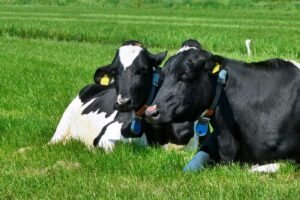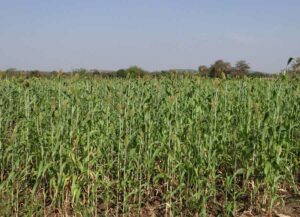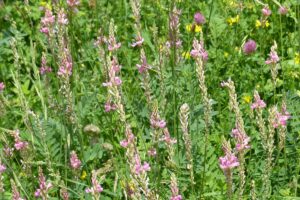Fernando Díaz
Aflatoxins are metabolites produced by mold fungi such as Aspergillus flavus and A. parasiticus under certain conditions. The most abundant aflatoxin, aflatoxin B1, is a potent carcinogen and it is considered the most toxic naturally occurring toxin.
After ingestion, aflatoxin B1 is bio-transformed into the secondary metabolite aflatoxin M1 and excreted in milk, urine and feces. Due to their importance on possible health consequences on humans, in the United States, the Food and Drug Administration (FDA) has limited the concentration of this metabolite in milk to a maximum of 0.5 ppb. In Europe; however, the maximum milk aflatoxin M1 concentration allowed by the European Commission is ten times lower (0.05 µg/kg).
Traditionally, sequestering agents are used to reduce the toxicity of aflatoxins in dairy cattle diets. These additives bind aflatoxin in the gastrointestinal tract and reduce its bioavailability.
A recent study carried out at the University of Missouri Foremost Dairy Research Center evaluated the efficacy of two commercial mycotoxin sequestrants in reducing aflatoxin M1 concentrations in milk of dairy cows challenged with dietary aflatoxin. During 7 days, the researchers (Rodrigues et al., 2019) fed mid-lactation cows a TMR diet supplemented with one of the following four treatments:
- 2.8 mg of aflatoxin & 100 g of a sequestering agent composed of high adsorbent clay minerals and inactivated yeast (Saccharomyces cerevisiae).
- 2.8 mg of aflatoxin & 100 g of a sequestering agent composed of high adsorbent clay minerals, inactivated yeast (S. cerevisiae), botanical components, and a mixture of antioxidants and preservatives.
- 2.8 mg of aflatoxin & no sequestering agent.
- No aflatoxin & no sequestering agent.
The aflatoxins were supplied as an Aspergillus parasiticus culture material containing 650 mg/kg of aflatoxin B1, 22 mg/kg of aflatoxin B2, 223 mg/kg of aflatoxin G1, and 5.7 mg/kg of aflatoxin G2. The treatments (aflatoxins & additives) were dispersed into 150 g of sweet feed carrier and top-dressed by mixing into the top portion of the TMR at each twice-daily feeding. On average, aflatoxin concentration in the contaminated diets was 105.5 μg/kg of dry matter, five times greater than the FDA limit for aflatoxins in feedstuffs (20 µg/kg).
These were the main findings:
- As expected, cows fed aflatoxins secreted substantial amounts of aflatoxin M1 into their milk. Both sequestering agents reduced aflatoxin excretion significatively, and the authors did not find differences in efficacy between them.
- Aflatoxin M1 concentration in milk from cows fed the additives was lower (0.25 µg/kg) than in milk from unsupplemented cows (0.6 µg/kg).
- Similarity, aflatoxin M1 excretion in milk (8.8 vs. 20.5 µg/day) and transfer from diet into milk (1.1 vs. 2.7%) was reduced by almost 60% with the sequestering agents.
- Interestingly, despite of the high aflatoxins levels in the diet, there were no effects of the aflatoxin alone or in combination with the additive on intake (26.9 kg/day), energy-corrected-milk yield (36.2 kg/day), milk component production (1.29 kg/day of milk fat and 1.08 kg/day of milk protein).
In summary, these results showed that the sequestering agents evaluated in this study reduced the absorption of aflatoxins B1 from the gastrointestinal tract of dairy cows, thus, reducing aflatoxin M1 excretion in milk.
Reference
R. O. Rodrigues, R. O. Rodrigues, D. R. Ledoux, G. E. Rottinghaus, R. Borutova, O. Averkieva, and T. B. McFadden. 2019. Feed additives containing sequestrant clay minerals and inactivated yeast reduce aflatoxin excretion in milk of dairy cows. J. Dairy Sci. 102:6614–6623.











